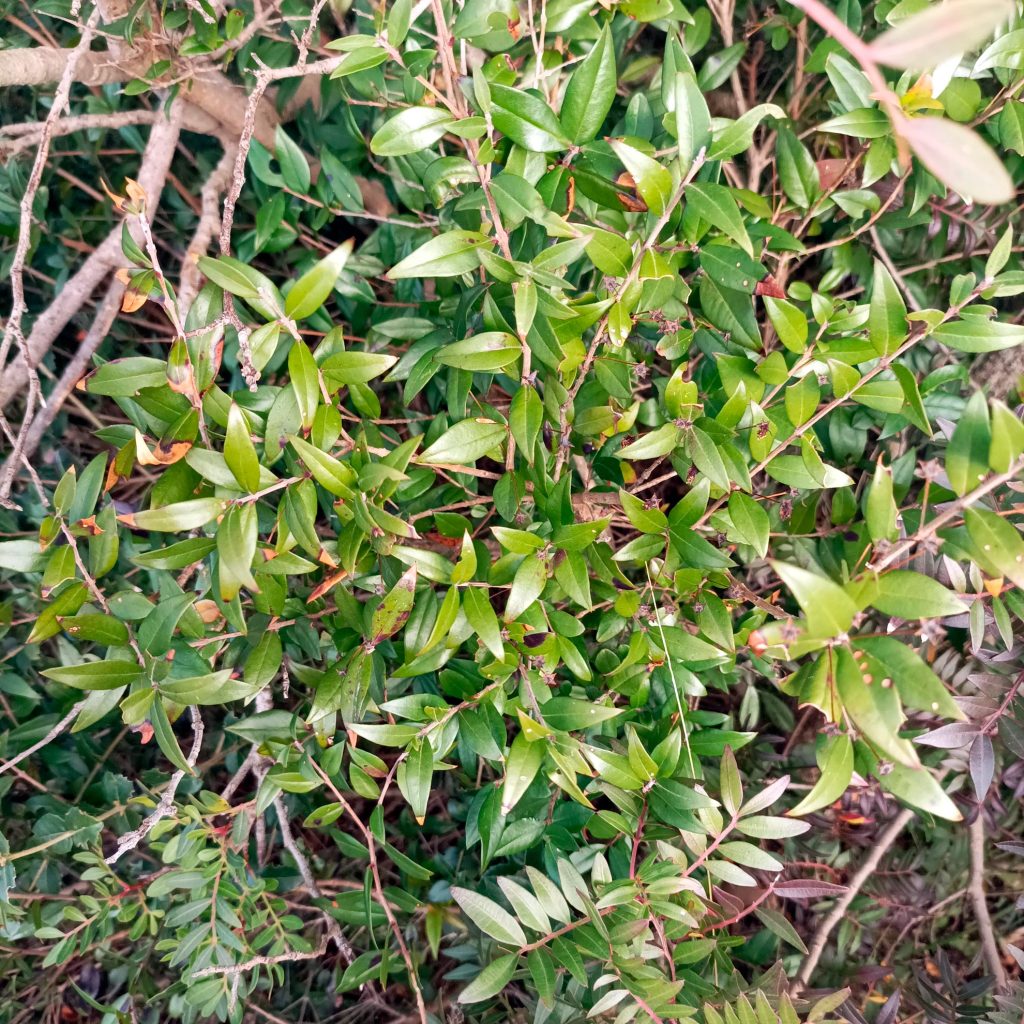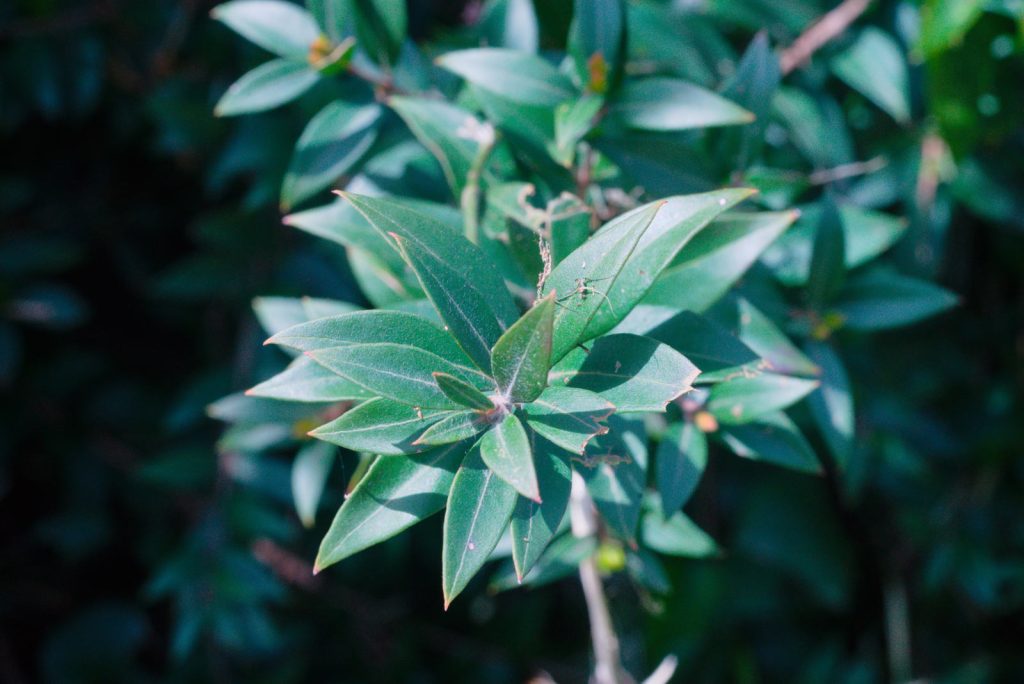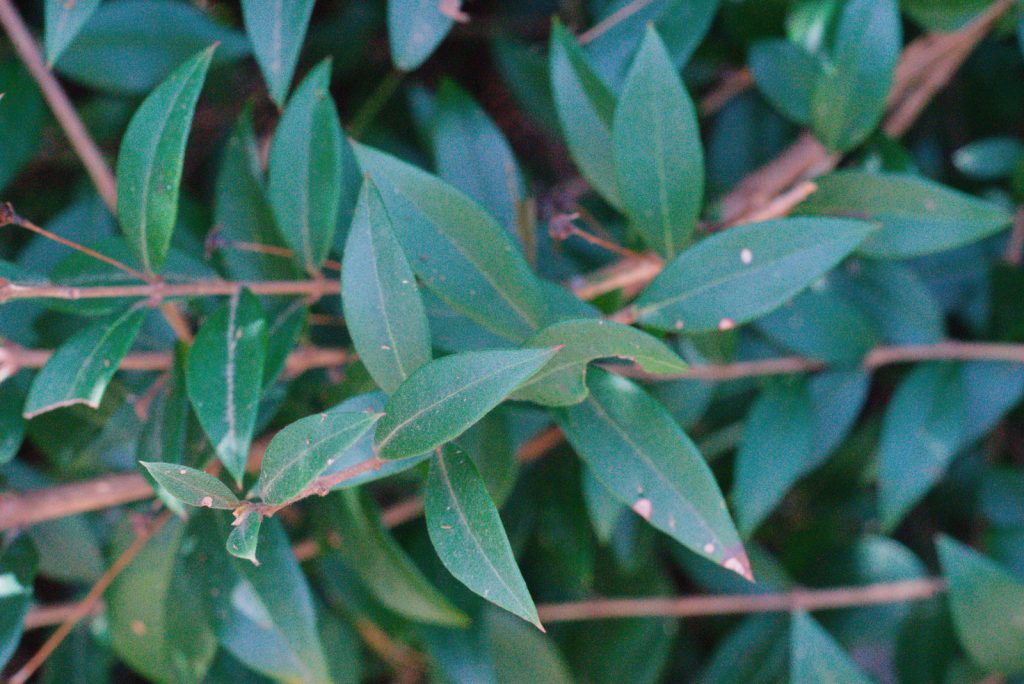Myrtle (Myrtus communis)
Myrtle, a fragrant evergreen shrub, thrives in the Mediterranean region’s warm, sunny climates. It grows up to 8 feet (2.5 meters) tall and spreads wide, creating a dense, bushy form. The plant’s dark green, glossy leaves release a pleasant aroma when crushed, adding to its appeal in gardens. In late spring and summer, myrtle produces small, star-shaped white flowers with numerous stamens, giving them a fluffy appearance. These flowers eventually develop into blue-black berries that are edible and often used in culinary dishes.
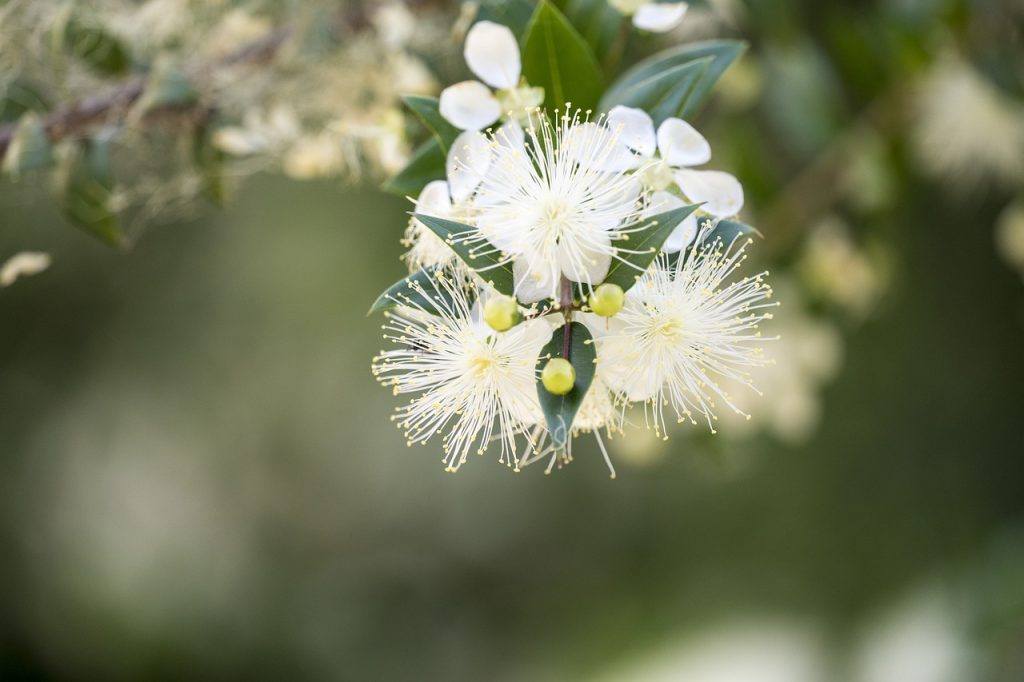
The plant’s aromatic leaves have been used for centuries in perfumes, while its berries and flowers serve both culinary and medicinal purposes. In addition to its cultural significance, myrtle provides ecological value. It attracts pollinators like bees and butterflies, and its dense growth offers shelter to small animals. Myrtle is drought-tolerant, making it a suitable choice for water-wise landscaping.
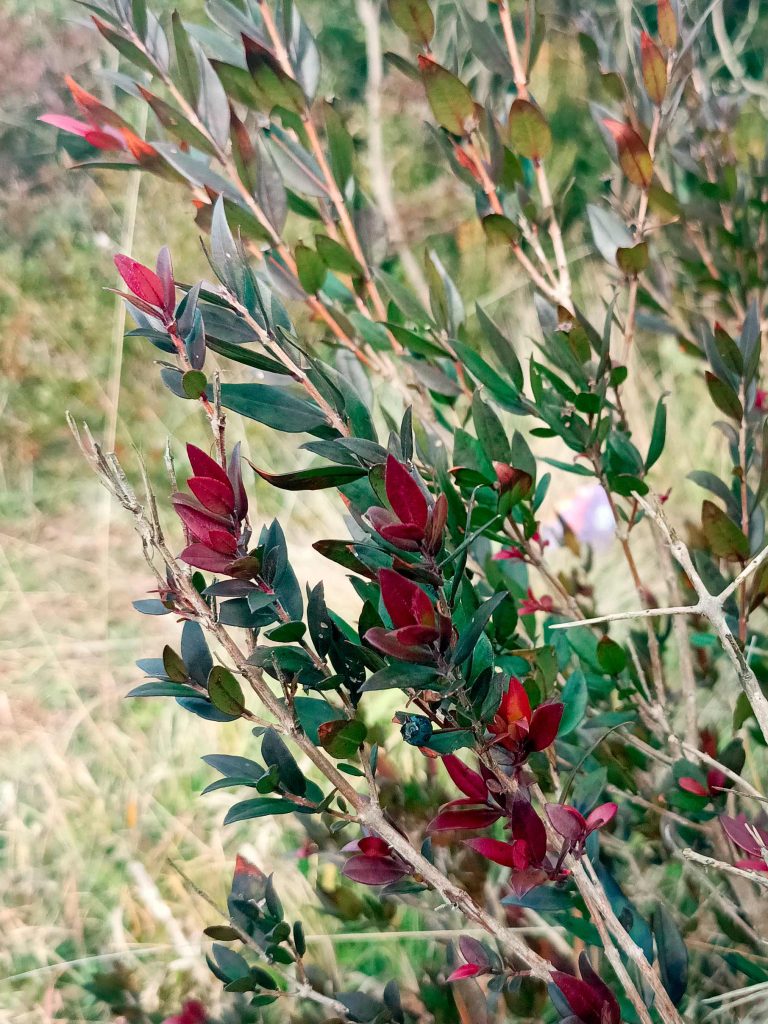
Scientific Classification of Myrtle
| Kingdom | Plantae |
| Clade | Angiosperms |
| Clade | Eudicots |
| Order | Myrtales |
| Family | Myrtaceae |
| Genus | Myrtus |
| Scientific Name | Myrtus communis |
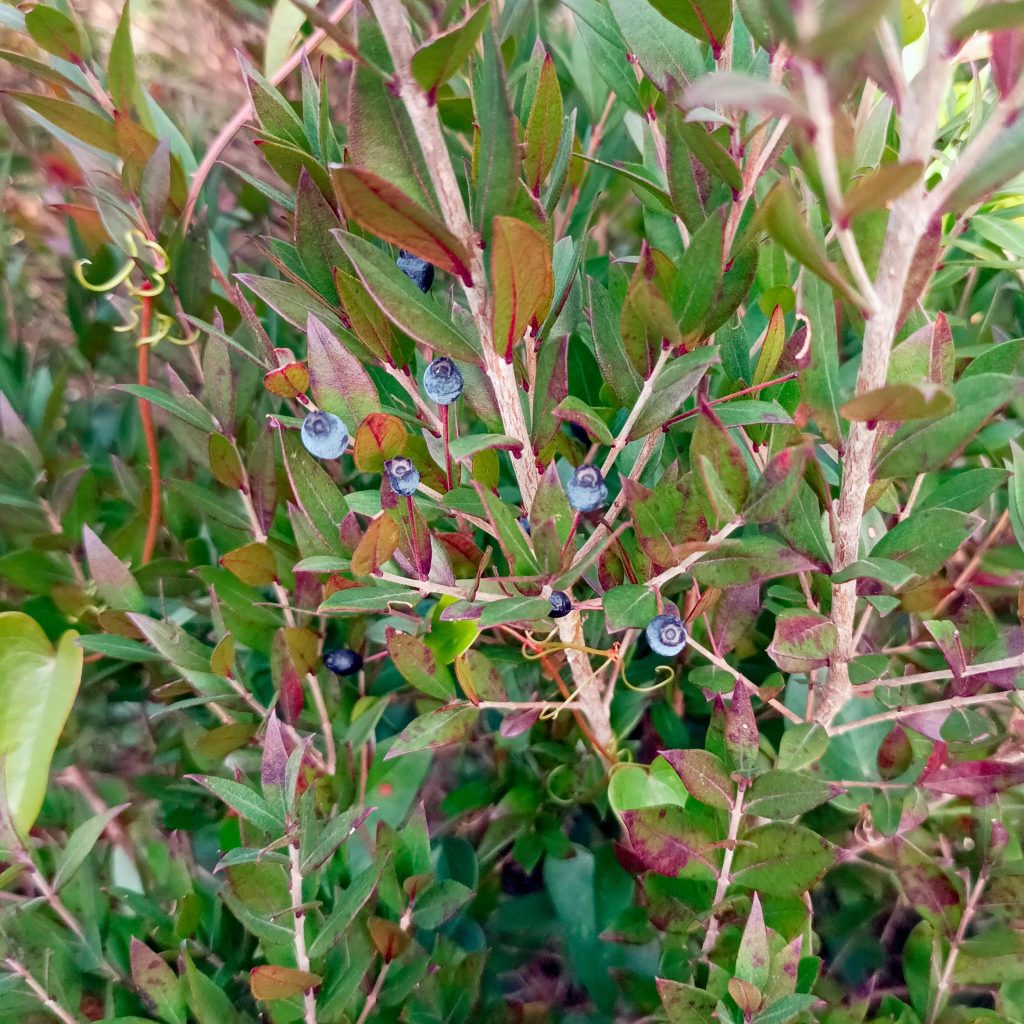
Quick Information
| Plant Type | Evergreen shrub |
| Identification | Height: Up to 8 feet (2.5 meters) tall Leaves: Dark green, glossy, aromatic when crushed Stem: Woody, branching stems Flowers: Small, star-shaped, white, numerous stamens, bloom in late spring and summer Roots: Spreading root system Growth Habit: Dense, bushy form Crown: Compact and rounded |
| Distribution | Native to the Mediterranean region |
| Habitat | Grows in well-drained soils, often found in coastal areas and scrublands |
| USDA Hardiness Zone | 8 through 11 |
| Growth Rate | Moderate; grows 12-24 inches (30-60 cm) per year |
| Lifespan | Long-lived; typically 50-100 years |
| Growing Conditions | Sunlight: Full sun to partial shade Soil: Well-drained, sandy, loamy soils Water: Low water needs, drought-tolerant |
| Drought Tolerance | High; adapted to dry Mediterranean climates |
| Diseases | Susceptible to root rot in overly wet conditions |
| Pests | Generally pest-resistant, though scale insects can occur |
| Reproductive System | Produces berries that contain seeds; self-seeding |
| Propagation | Through seeds and cuttings |
| Wildlife Value | Attracts pollinators like bees and butterflies; provides shelter for small animals |
| Uses | Ornamental landscaping, culinary uses (berries and leaves), traditional medicine, perfume production |
| IUCN Conservation Status | Not currently listed as threatened |
